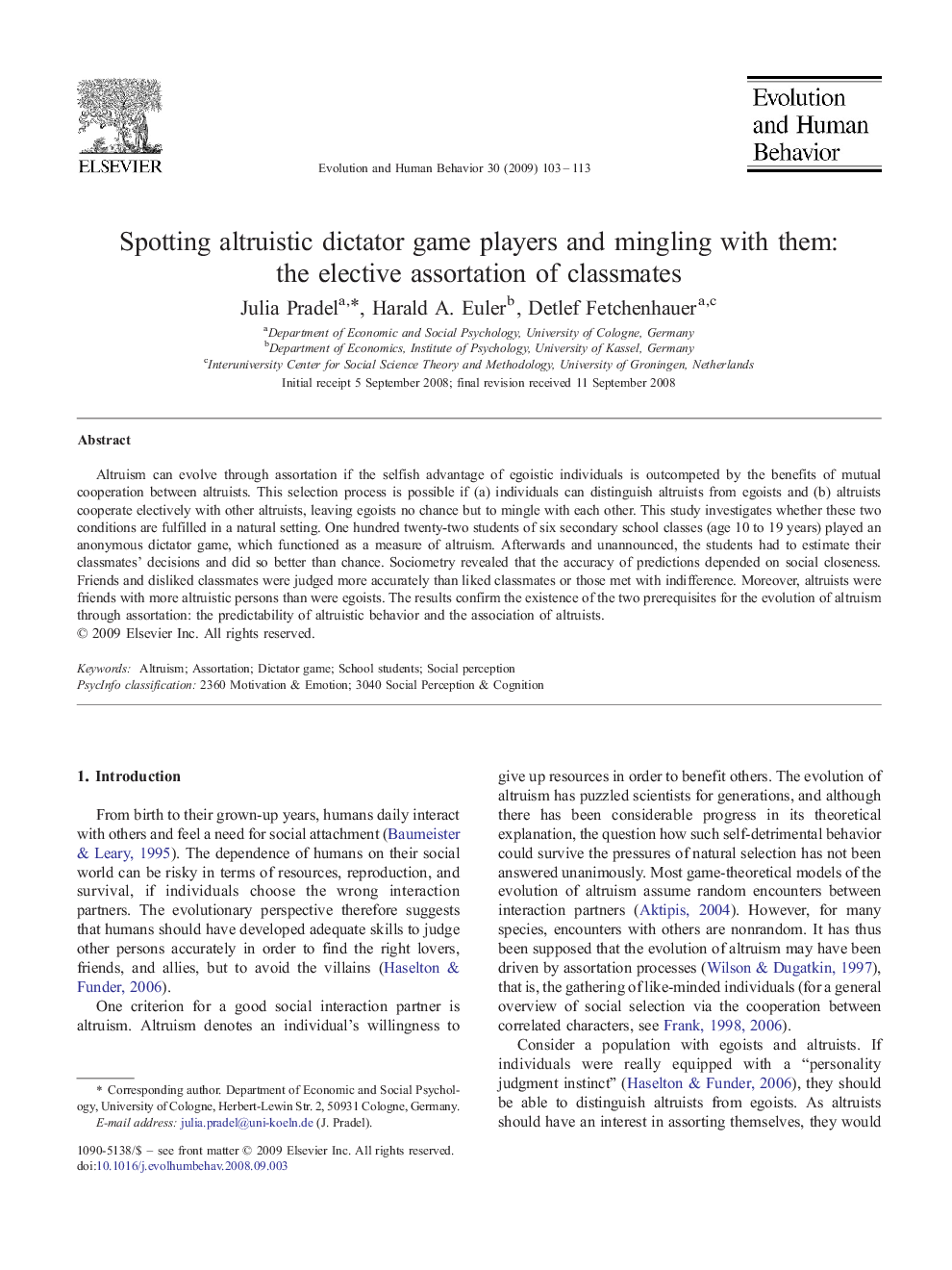| Article ID | Journal | Published Year | Pages | File Type |
|---|---|---|---|---|
| 943550 | Evolution and Human Behavior | 2009 | 11 Pages |
Altruism can evolve through assortation if the selfish advantage of egoistic individuals is outcompeted by the benefits of mutual cooperation between altruists. This selection process is possible if (a) individuals can distinguish altruists from egoists and (b) altruists cooperate electively with other altruists, leaving egoists no chance but to mingle with each other. This study investigates whether these two conditions are fulfilled in a natural setting. One hundred twenty-two students of six secondary school classes (age 10 to 19 years) played an anonymous dictator game, which functioned as a measure of altruism. Afterwards and unannounced, the students had to estimate their classmates' decisions and did so better than chance. Sociometry revealed that the accuracy of predictions depended on social closeness. Friends and disliked classmates were judged more accurately than liked classmates or those met with indifference. Moreover, altruists were friends with more altruistic persons than were egoists. The results confirm the existence of the two prerequisites for the evolution of altruism through assortation: the predictability of altruistic behavior and the association of altruists.
